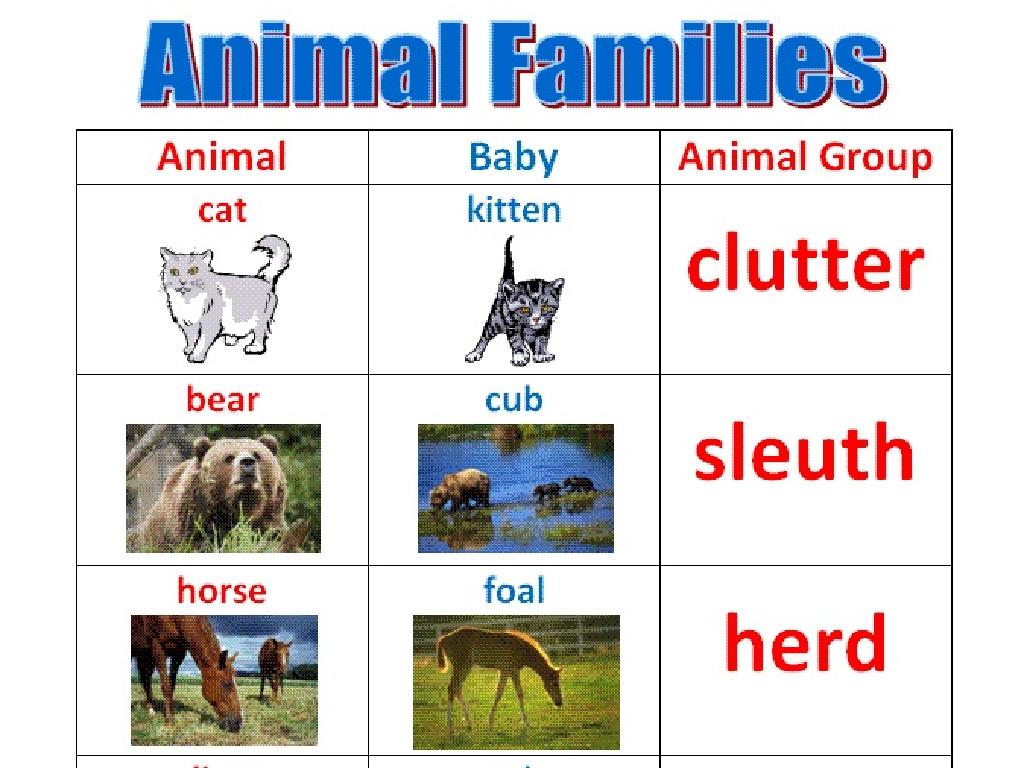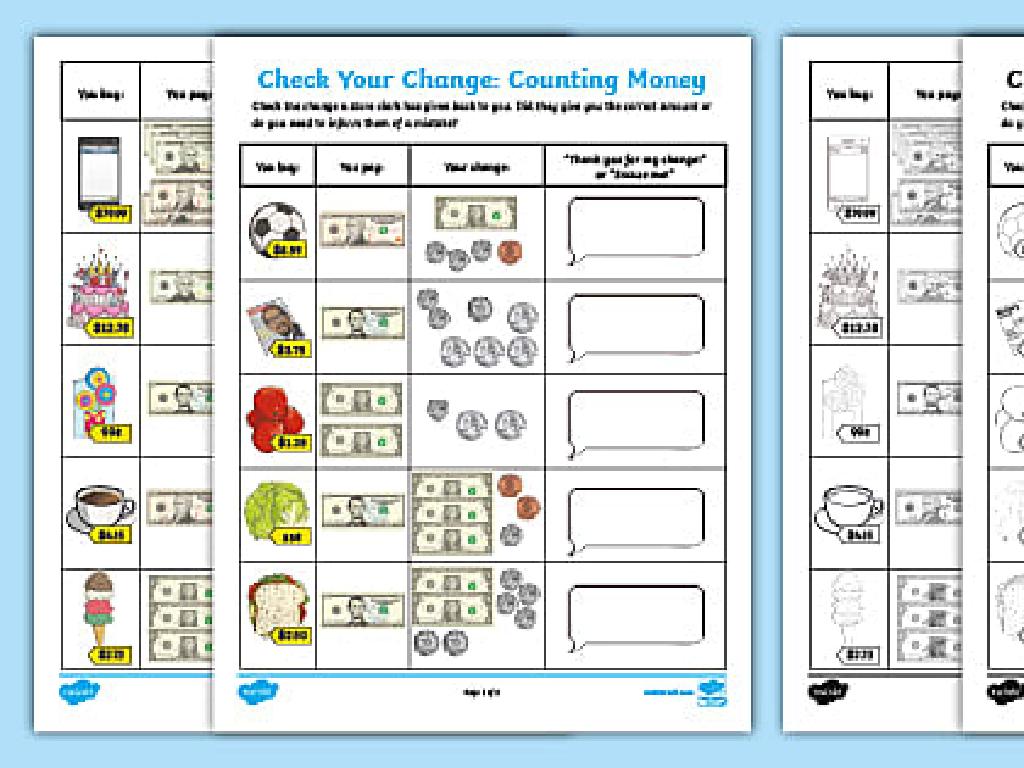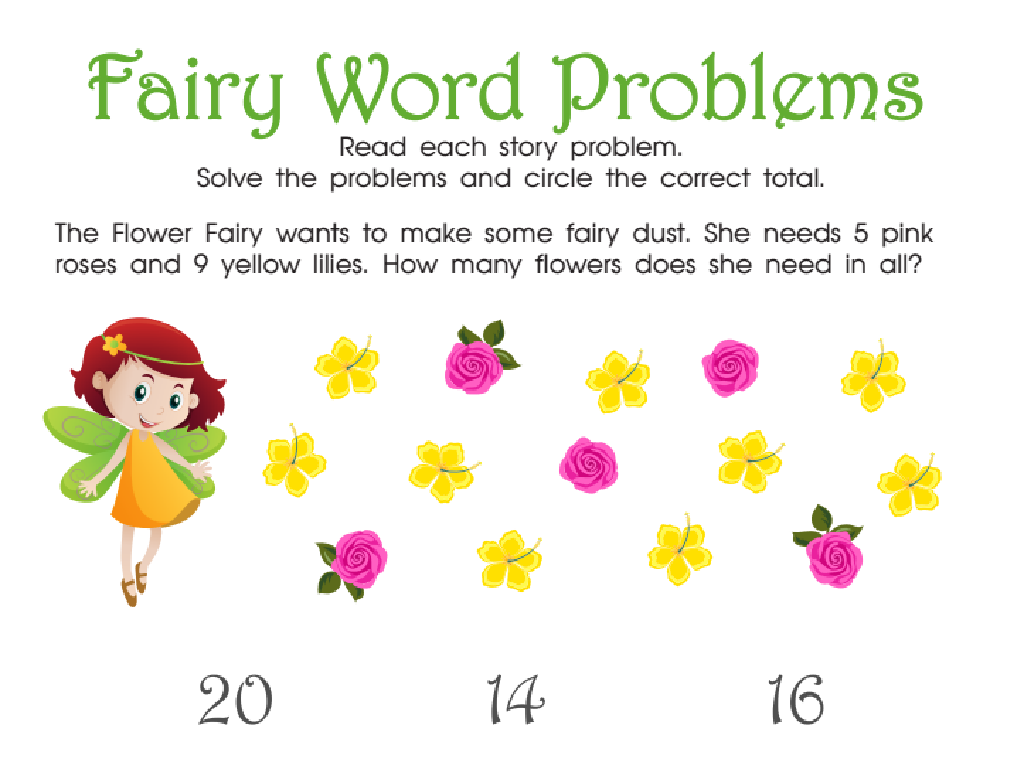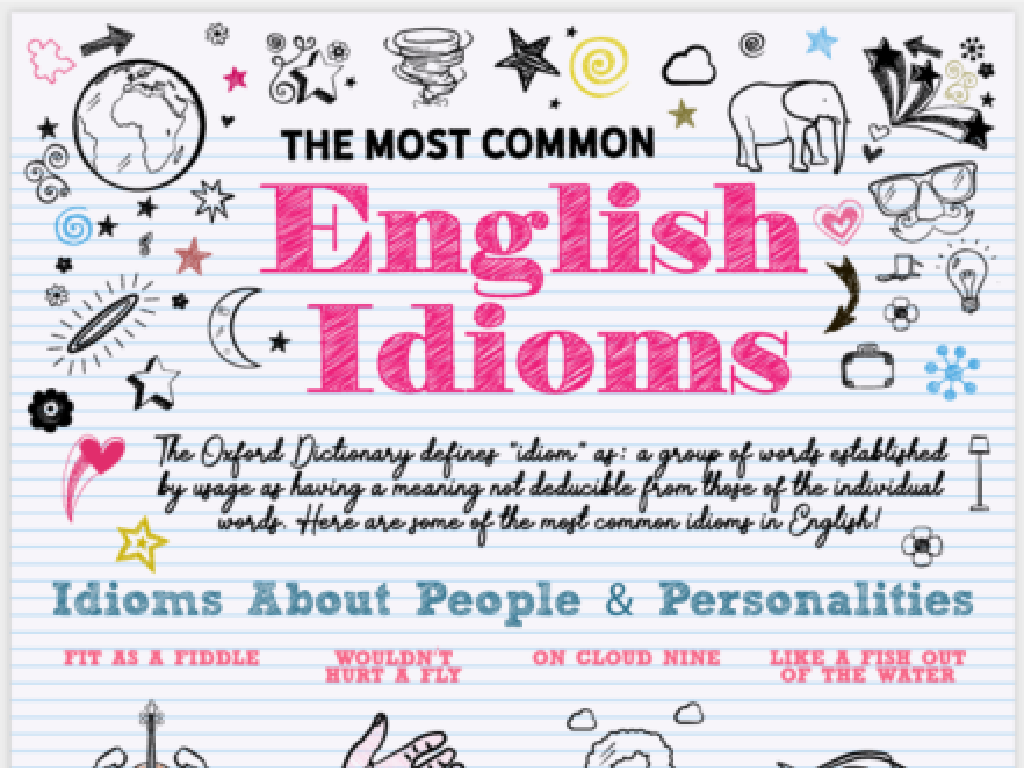Estimate Tips
Subject: Math
Grade: Seventh grade
Topic: Consumer Math
Please LOG IN to download the presentation. Access is available to registered users only.
View More Content
Estimating Tips in Consumer Math
– Understanding tipping concept
– Tipping is giving extra money for services
– Importance of estimating tips
– Helps budget and show appreciation
– Tipping customary scenarios
– Restaurants, hotels, and taxis often expect tips
– Practice estimation skills
|
This slide introduces students to the concept of tipping as part of consumer math. Tipping is a common practice where customers give extra money to service workers as a token of appreciation for their service. Estimating tips is an important skill that helps individuals budget their expenses and also shows gratitude for services received. Discuss real-life scenarios where tipping is customary, such as in restaurants, hotels, and taxi services. Encourage students to think about why tipping is important and how it affects both the customer and the service provider. To reinforce learning, students can practice estimating tips with various percentages and service scenarios.
Understanding Tips in Consumer Math
– Define what a tip is
A tip is a voluntary extra payment made for services.
– Tip vs. service charge
A tip is given directly to the service worker, while a service charge is added to the bill.
– Tipping practices globally
Tipping varies: In the US it’s customary, while in Japan it’s not expected.
– Significance of tipping etiquette
|
This slide introduces students to the concept of tipping as part of consumer math. Begin by defining a tip as a voluntary amount of money given to service workers over the bill amount as a token of appreciation for good service. Contrast this with a service charge, which is a mandatory fee added to the bill by the establishment. Discuss how tipping is not a universal practice and varies greatly across cultures, with some countries expecting generous tips, while others consider it unnecessary or even rude. Emphasize the importance of understanding tipping etiquette, especially when traveling, as it reflects on cultural respect and social norms.
Estimating Tips with Basic Percentages
– Review of percentage calculation
– Recall: To find a percentage, multiply the total by the percentage rate.
– Connection between percentages and tips
– Tips are a percentage of the total bill amount.
– Examples of tip calculations
– For a $50 bill, a 15% tip is $50 * 0.15 = $7.50.
|
Begin with a quick refresher on how to calculate percentages, as this is a foundational skill for understanding how to estimate tips. Emphasize that tipping is a practical application of percentage calculation, where the tip amount is a certain percentage of the total bill. Provide clear examples with different bill amounts and tip percentages to illustrate the process. For instance, show how to calculate a 10%, 15%, and 20% tip on a $50 bill. Encourage students to practice with different scenarios to become comfortable with estimating tips quickly and accurately.
Estimating Tips at Restaurants
– Understand standard tipping rates
– Common rates: 15%, 18%, 20% of the bill
– Estimating tips for service quality
– Better service generally means a higher tip percentage
– Practice with various bill amounts
– Calculate tips for bills: $10, $25, $50
– Discuss reasons for tipping
|
This slide introduces students to the concept of tipping in restaurants, a practical application of percentage calculation in consumer math. Start by explaining the standard tipping rates and what they represent in terms of service satisfaction. Emphasize that while there are suggested percentages, the actual tip can vary based on the quality of service received. Provide examples with different bill amounts to practice estimating tips, reinforcing the use of percentages. Engage students in a discussion about the reasons for tipping and how it supports service industry workers. This will help them understand the social and economic implications of tipping in addition to the mathematical skills involved.
Rounding for Easier Tip Estimation
– Why rounding simplifies estimation
– Round bill amounts to nearest dollar
– If a bill is $23.78, round to $24 for simplicity
– Practice rounding for tip estimates
– Example: Round $23.78 to $24, estimate 10% tip as $2.40
– Tips: Using percentages of 10% and 15%
– Easy tip calculation by finding 10% and adjusting for 15%
|
This slide introduces the concept of rounding as a tool to make the estimation of tips easier. Rounding to the nearest dollar simplifies the math involved in calculating a tip. Students should learn to efficiently round up or down to the nearest whole number before applying a percentage to estimate the tip. For practice, provide several bill amounts for students to round and then calculate both 10% and 15% tips. Emphasize that while exact calculations are important, estimation is a valuable skill in everyday situations such as dining out. Encourage students to share their rounding strategies and discuss when it might be more appropriate to give a 10% tip versus a 15% tip.
Estimating Tips with Mental Math
– Quick tricks for mental math
– Round up the bill to the nearest ten, then calculate 10% or 20%.
– Estimate tips without calculator
– Use easy percentages like 10% and double for 20% tip.
– Mental math challenge activity
– Students will estimate tips on various bill amounts.
|
This slide introduces students to the practical skill of estimating tips using mental math, which is a valuable part of consumer math. Start by discussing some quick tricks for mental math, such as rounding the bill to the nearest ten and finding 10% by moving the decimal one place to the left. Then, show how to double this amount for a 20% tip. For the class activity, present various bill amounts and have students practice estimating tips. Possible activities include: 1) Estimating tips for different percentages, 2) Role-playing as customers and servers in a restaurant, 3) Group competition on who can estimate tips the fastest, 4) Real-life scenario role-play with actual menus and prices, 5) Creating a tip chart for reference. This will help reinforce their understanding and provide a fun way to apply math skills.
Class Activity: Tip Estimation Game
– Split into groups for dining role-play
– Each group gets a bill to estimate tips
– Use 10%, 15%, or 20% as a tip guide
– Discuss how you estimated the tip
– Share methods within the class
– Compare different estimation strategies
|
This interactive class activity is designed to help students apply their knowledge of percentages in a real-world scenario. By simulating dining experiences, students will work in groups to calculate the tip for their assigned bill amount. They should use common tip percentages such as 10%, 15%, or 20% to estimate the tip. After the activity, lead a discussion where each group explains their estimation process, which will help students understand various methods of calculation and reinforce their understanding of percentages. Encourage students to think critically about why tipping is important and how it affects those in the service industry. Provide guidance on etiquette and cultural practices related to tipping. This activity will also enhance teamwork and communication skills.
Estimating Tips: Conclusion & Homework
– Recap: Why estimate tips?
– Homework: Calculate real-life tips
– Find bills from meals or services and estimate a 15-20% tip.
– Compare your tip calculations
– How do different tip percentages affect the total bill?
– Next class: Introduction to Budgeting
|
As we conclude today’s lesson on estimating tips, remind students of the importance of this skill in everyday life, especially as they become more financially independent. For homework, they should find three real-life scenarios where they can practice calculating tips, such as restaurant bills or service fees, and compare the results of different tip percentages. This will help reinforce today’s lesson and prepare them for the next topic, Budgeting Basics, where they will learn to manage their finances more effectively. Encourage them to bring their questions and findings to the next class for discussion.





